Stunning Hummingbirds of ABC's Reserve Network
Nearly 200 species of hummingbirds find shelter at the 70-plus reserves that American Bird Conservancy supports across the Americas. That's more than 50 percent of the approximately 365 known hummingbird species!

Long-tailed Sylph. Photo by Martin Mecnarowski/Shutterstock
Some are wide-ranging, like the Sparkling Violetear, which can be seen at 23 reserves. Others are limited to just one reserve. For example, the endangered Royal Sunangel is seen only at Abra Patricia in Peru, where the spectacular but wider-ranging Long-tailed Sylph is also resident.
These birds have plenty in common, however: brilliant names, remarkable looks, and extraordinary behaviors. Here are a few of these striking hummingbirds and the reserves that help to protect them.
Rainbow-bearded Thornbill
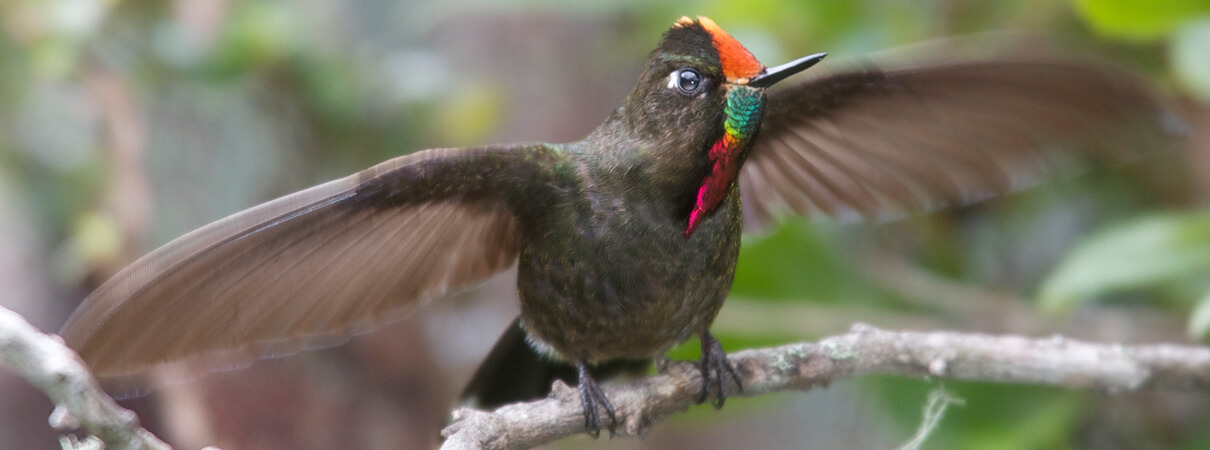
Rainbow-bearded Thornbill. Photo © Michael Stubblefield
When it catches the light, the throat of the Rainbow-bearded Thornbill glitters with color. Like other thornbills, this species' bill is short for a hummingbird, used not just for consuming nectar but also for catching prey. The birds flick insects into the air and catch them in their mouths! The population of this Andean species is declining overall but is considered rare to fairly common depending on the site.
Within ABC's reserve network, the birds can be seen at Yanacocha and Tapichalaca reserves in Ecuador (managed by ABC partner Fundación Jocotoco) and several other locations.
Violet-tailed Sylph

Violet-tailed Sylph. Photo by Martin Mecnarowski
Sweeping down with its long tail feathers trailing, the stunning Violet-tailed Sylph usually forages low to the ground, visiting flowers on vines, trees, and shrubs in a repeated circuit. It's common in cloud forests, including Buenaventura Reserve in Ecuador (managed by Fundación Jocotoco) and two other ABC-supported reserves.
This sylph's flexibility is a key to its success: The birds use partly open areas in addition to forest. The male's outermost tail feathers—purple with blue tips—distinguish it from Long-tailed Sylph, which has a blue tail.
Glittering Starfrontlet
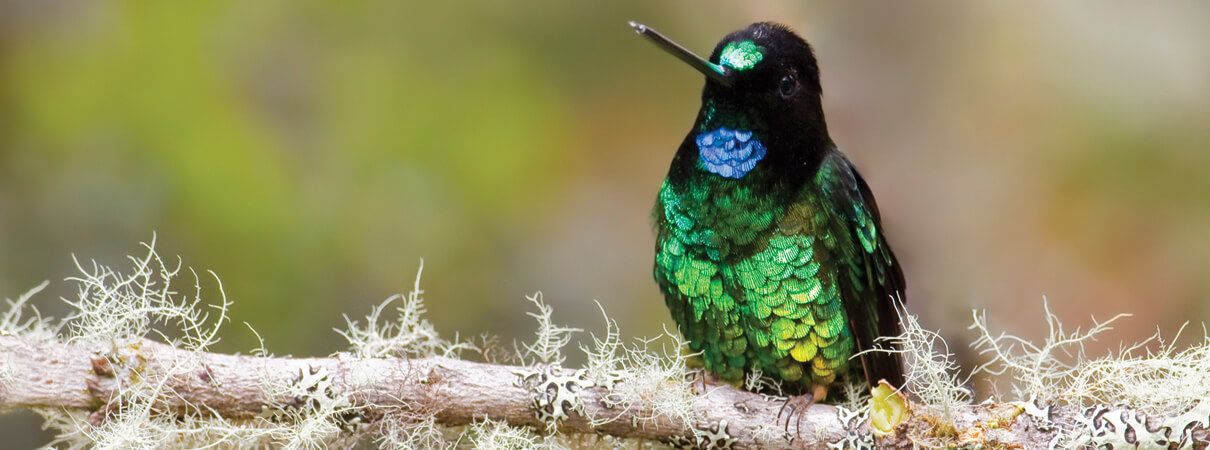
Glittering Starfrontlet. Photo by Dubi Shapiro
The name alone tells you that this bird is something special. Formerly known as Dusky Starfrontlet, the Glittering Starfrontlet is one of the rarest of all hummingbirds, with as few as 250 individuals surviving in northwest Colombia.
The Colibri del Sol Reserve was created in 2005 by Fundación ProAves, with ABC support, to conserve this critically endangered species. With habitat ranging from humid montane forest to páramo (a high-elevation, tropical ecosystem), the reserve is the only protected area for the species.
Rufous-crested Coquette
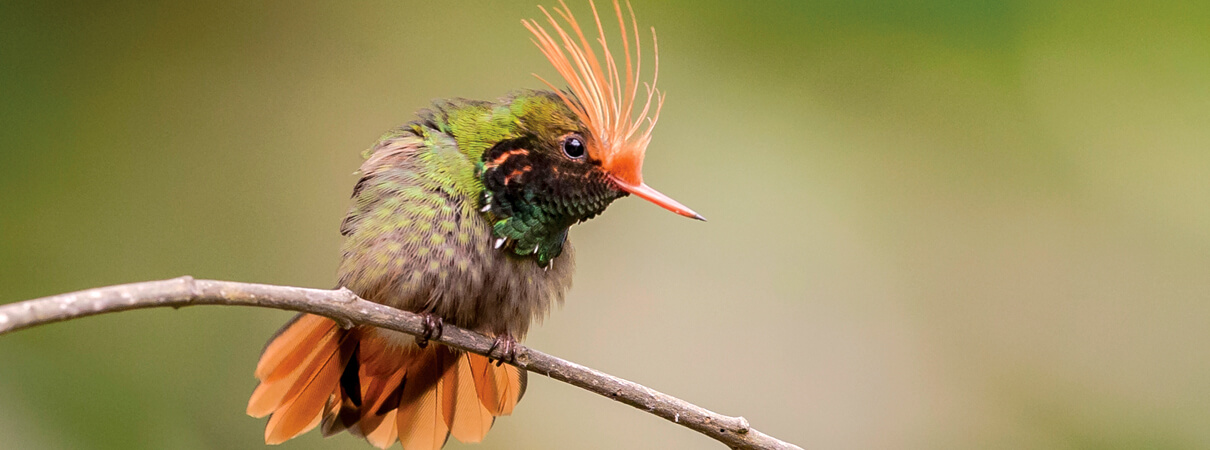
Rufous-crested Coquette. Photo by Paul Jones
The Rufous-crested Coquette is named for the male bird's incredible spiky crest. (The similar Spangled Coquette has a bushier crest.)
Found in scattered populations from Panama to Bolivia, this species is found in just two ABC-supported reserves: El Paujil in Colombia (managed by Fundación ProAves) and Villa Carmen in southeast Peru (managed by Amazon Conservation Association).
Shunning thick forest, these coquettes prefer shrubby clearings and edges, where they feed on low flowering plants and perch along roadsides.
Wire-crested Thorntail

Wire-crested Thorntail. Photo by Glenn Bartley
The Wire-crested Thorntail stands out in humid Amazon forests, hovering like a bee in the canopy or perching at the canopy's edge.
A bird of northwestern South America, it's rare in Colombia; although it's more numerous in Ecuador and Peru, the species is uncommon throughout its range. This thorntail's numbers may continue to decline as land is cleared for cattle ranching and soy production.
The Wire-crested Thorntail finds refuge at four ABC-supported reserves, including Tapichalaca in Ecuador (managed by partner Fundación Jocotoco).
Booted Racket-tail
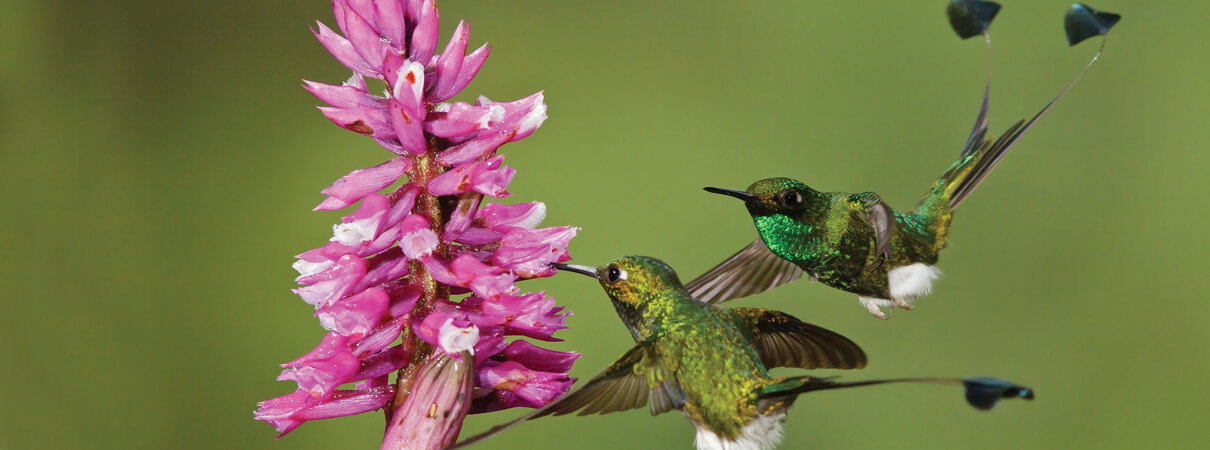
Booted Racket-tail. Photo by Glenn Bartley
The Booted Racket-tail sports puffy white leg feathers resembling cotton balls. These feathers, which are also seen on all puffleg hummingbirds, are not always visible but are present on both male and female birds. (The males alone have elaborate tails tipped with “rackets.”)
This Andean species has a very large range, from Colombia and Venezuela south to Bolivia, where the birds prefer humid woodland edges at mid-level elevations.
Thirteen ABC-supported reserves provide habitat for the Booted Racket-tail, including Abra Patricia in Peru, one of the reserves run by our partner ECOAN.
Rufous-breasted Hermit
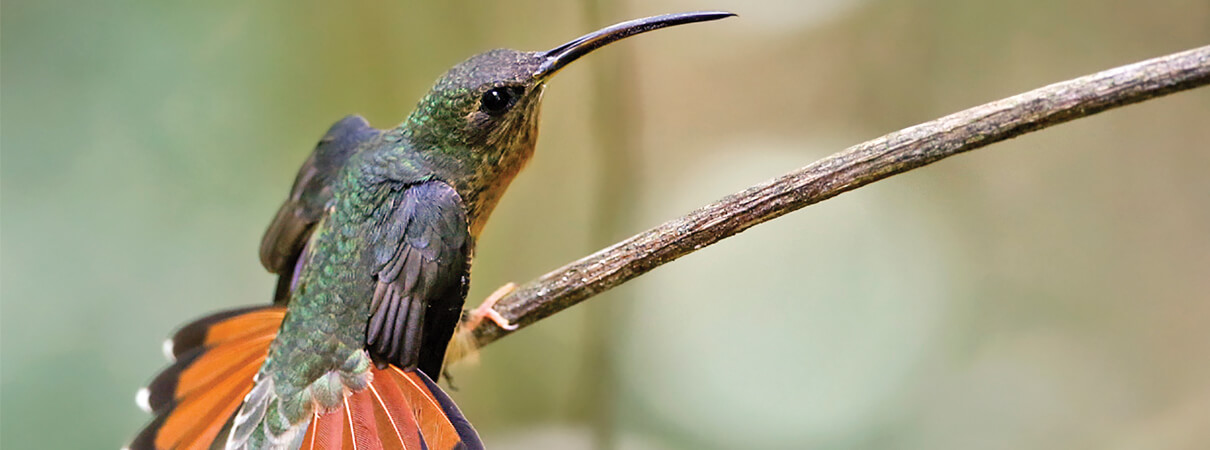
Rufous-breasted Hermit. Photo by Ciro Albano
A wide-ranging species, the Rufous-breasted Hermit is found throughout much of Amazonia as well as in Grenada and Trinidad and Tobago, where a distinct subspecies is recognized. It nears the easternmost limit of its range in the ABC-supported Stresemann's Bristlefront Reserve in Brazil (managed by Fundação Biodiversitas).
Unlike other hermit species, male Rufous-breasted Hummingbirds don't form groups, or leks, to attract females. They also defend their nests from intruders, an unusual behavior among male hummingbirds.
Editor's Note: This story first appeared in the Summer 2016 issue of "Bird Conservation" magazine, an issue dedicated to these small, feisty avian treasures. (Like our magazine? Join us as a member and receive four issues a year.)


















































